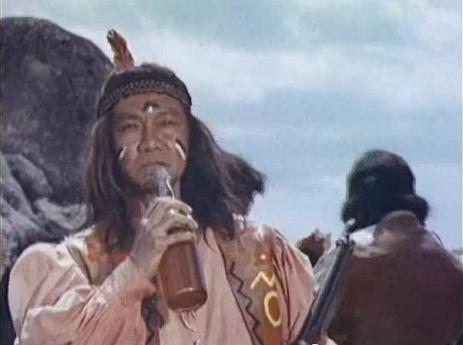AP
October 7, 2013
American Indian tribes have been caught misappropriating tens of millions of taxpayer dollars, according to internal tribal audits and other documents. But federal authorities do little about it — due to a lack of oversight, resources or political will.
The result? Poor tribes like the Northern Arapaho of Wyoming suffer.
One Arapaho manager pocketed money meant to buy meals for tribal elders. Another used funds from the reservation’s diabetes program to subsidize personal shopping trips. And other members plundered the tribal welfare fund, then gambled the money away at one of the tribe’s casinos.
Altogether, employees drained at least a half-million dollars from the coffers of a tribe whose members have a median household income of about $16,000 a year.
Federal agencies questioned millions more dollars the Northern Arapaho government spent, but decided not to recover any of the money — and even increased funding to the tribe.
The Wyoming tribe is hardly unique.
An Associated Press review of summaries of audits shows that serious concerns were consistently raised about 124 of 551 tribal governments, schools or housing authorities that received at least 10 years of substantial federal funds since 1997.
Fraud and theft occur across the range of nonprofits and local governments that get federal money. But tribes are five times as likely as other recipients of federal funds to have “material weaknesses” that create an opportunity for abuses, according to the review. Overall, 1 in 4 audits concluded that tribal governments, schools or housing authorities had a material weakness in their federally funded programs; the rate was 1 in 20 for nontribal programs.
Thousands of pages of audits and dozens of reports by federal investigators, obtained by the AP under the Freedom of Information Act, show evidence of embezzlement, paychecks for do-nothing jobs and employees who over-billed hours and expenses. The audits, conducted by private firms, are required of tribes that spend more than $500,000 in federal funds annually.
Agencies often cannot legally cut funding because of treaties, Supreme Court decisions and acts of Congress, and they frequently refuse to take control of failing programs.
“It’s basically a reluctance to take on tribes. The Department of the Interior bends over backwards to be their friends,” said Earl Devaney, the former inspector general at the department that houses the bureaus of Indian Affairs and Indian Education. “It’s ‘make nice,’ and what you don’t know, you don’t know.”
Many amounts were relatively small. But there are so many instances of abuses that the total was substantial.
Tribal council members in Northern California used federal grants to pay their utility bills and mortgages. A Nebraska tribe spent health clinic money on horses and ATVs. An environmental supervisor with a Washington tribe received $16,000 for mileage and other charges he either exaggerated or never incurred. A tribal housing authority in Nevada sprang for a 25-night, $6,500 retreat at a resort in South Lake Tahoe, Calif.
Among grant programs with a significant track record in a government database of audits, tribes ran 16 of the 20 with the highest rates of rule-breaking. Auditors flagged welfare grants to tribes, for example, 39 percent of the time. Most prominent were programs funded by Interior’s bureaus of Indian Affairs and Indian Education and the Indian Health Service, under the Department of Health and Human Services.
Many findings by auditors suggest mismanagement, not theft or fraud.
One barrier to proper administration of tribal programs is turnover among staff and leaders — entire governments can be voted out of office every two years. Attracting qualified administrators to often-remote reservations in the first place is another challenge. “So they hire maybe the chairman’s nephew who had some accounting classes,” said Pete Magee, a longtime auditor of tribal books.
Sergio Maldonado, a Northern Arapaho member who is diversity coordinator at Central Wyoming College in Riverton, said tribes generally are just finding their self-governance footing after years of being under federal control. He said there are four goals for a successful tribal government — “academic preparation, professional experience, a collective consensus for the benefit of the tribe and an ethical set of guidelines.”
Maldonado, who also teaches a class about the tribe on the reservation, said it is relatively easy to address each point individually. But all four must be done together, and that’s not easy, he added. “It’s not just our reservation; this is commonplace with a lot of tribes.”
